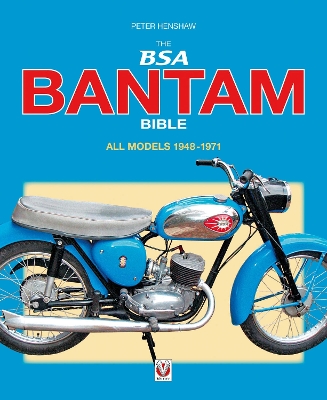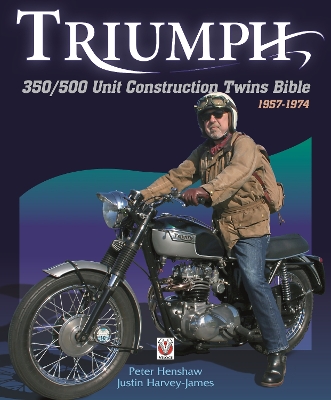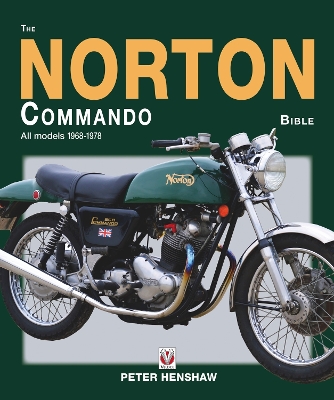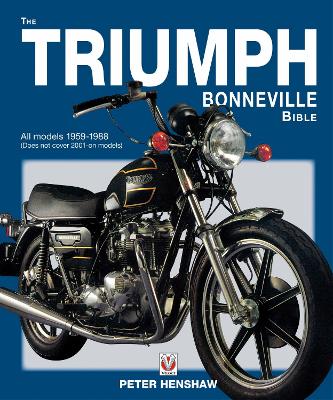Bible
4 total works
Now in paperback! The BSA Bantam is one of the definitive postwar British bikes, perhaps THE definitive British lightweight built after World War II. It was certainly the most popular, with over 400,000 built over a 23-year production run – in the first four years, production broke all records. Yet it would die a lingering death, production fizzling out in the early 1970s as a neglected model of a manufacturer more concerned with building big, fast road-burning bikes. The Bantam might never have happened without World War II. The prewar DKW RT125 was offered to the Allies as reparations, taken up and produced in the USA, USSR, even Japan! In East Germany it was revived as the MZ, and in Britain it surfaced publicly in 1948 as the BSA Bantam, a very simple little 123cc two-stroke, with rudimentary electrics, no rear suspension and a lot of charm.
The little bike became part of Britain’s social history. Thousands of people learnt to ride on a Bantam, or had their first pillion experience on one, or rode one delivering telegrams for what was the GPO. Although many of those learners progressed to bigger, faster bikes, then gave up two wheels for family life, they won’t have forgotten the Bantam, which explains why there’s such a thriving Bantam community to this day – the club, the racing club, the spares specialists, and restorers, owners and riders all over the country. This might not be Britain’s most glamorous motorcycle, its fastest or most flamboyant, but the Bantam is probably the most loved.
The little bike became part of Britain’s social history. Thousands of people learnt to ride on a Bantam, or had their first pillion experience on one, or rode one delivering telegrams for what was the GPO. Although many of those learners progressed to bigger, faster bikes, then gave up two wheels for family life, they won’t have forgotten the Bantam, which explains why there’s such a thriving Bantam community to this day – the club, the racing club, the spares specialists, and restorers, owners and riders all over the country. This might not be Britain’s most glamorous motorcycle, its fastest or most flamboyant, but the Bantam is probably the most loved.
Want to be an expert on Triumph’s 350 and 500 unit-construction twins? Here is everything you need to know about these classic machines.
Alongside the headline-grabbing bikes – the Bonneville and Trident – Triumph built a whole series of smaller 350/500cc machines, with all the style of their bigger brothers, but lighter in weight, easier to ride, and now cheaper to buy. The Triumph 350/500s played a key role in the company’s success through the 1960s, in North America as well as the UK. The range included everything from the original 350cc 3TA, a mild-mannered tourer, to the final Daytona Tiger 500 (a modified version of which won the Daytona 500 race in 1967), and the TR5T trail bike.
This comprehensive book covers the complete history of these bikes, with details of model variants, advice on buying and living with a Triumph 350/500, technical specifications, and a list of useful contacts.
Alongside the headline-grabbing bikes – the Bonneville and Trident – Triumph built a whole series of smaller 350/500cc machines, with all the style of their bigger brothers, but lighter in weight, easier to ride, and now cheaper to buy. The Triumph 350/500s played a key role in the company’s success through the 1960s, in North America as well as the UK. The range included everything from the original 350cc 3TA, a mild-mannered tourer, to the final Daytona Tiger 500 (a modified version of which won the Daytona 500 race in 1967), and the TR5T trail bike.
This comprehensive book covers the complete history of these bikes, with details of model variants, advice on buying and living with a Triumph 350/500, technical specifications, and a list of useful contacts.
A detailed history of the Norton Commando: its antecedents, development, and year-by-year production changes, including the turbulent story of the company that built it, bringing the story right up to the present day.
This book also includes expert advice on owning and maintaining one of these iconic bikes, as well as information on clubs, websites and spares.
Featuring great colour photos, including original advertising material, and comprehensive appendices of facts, figures, contacts, technical specifications, engine/frame numbers, and road test performance figures, this is the definitive book of a bike that truly deserves the term ‘classic.’
This book also includes expert advice on owning and maintaining one of these iconic bikes, as well as information on clubs, websites and spares.
Featuring great colour photos, including original advertising material, and comprehensive appendices of facts, figures, contacts, technical specifications, engine/frame numbers, and road test performance figures, this is the definitive book of a bike that truly deserves the term ‘classic.’



